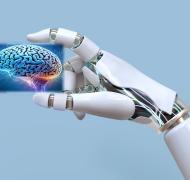- 14 views
One fascinating aspect of research in artificial intelligence (AI) and neuroscience is the comparison between the power of the human brain and modern supercomputers. Despite the complexity of the human brain, its energy consumption is surprisingly low.
The Power of the Human Brain:
The human brain consumes about 10-30 watts, roughly the same as a standard light bulb. This energy efficiency is remarkable considering that the brain processes billions of synapses and performs complex operations like logical reasoning, language processing, learning, and memory. Although it functions with minimal power, the brain can quickly adapt behavior and learn from experiences in ways that remain difficult for technology to replicate.
Supercomputers:
In contrast, a modern supercomputer, used for advanced simulations like climate modeling or AI research, can consume tens of thousands of megawatts, equivalent to the energy consumption of a small city. These massive machines are designed to solve extremely complex problems, such as modeling climate predictions or simulating large neural networks, but at a significant energy cost.
Fundamental Differences:
Although supercomputers far surpass the human brain in terms of speed and storage capacity, the brain remains vastly superior in terms of energy efficiency and adaptability. Additionally, the human brain operates in a highly sophisticated, parallel manner, allowing it to perform multiple tasks simultaneously with minimal energy.
Artificial intelligence aims to mimic, to some extent, these cerebral processes, but major challenges remain in balancing energy consumption and performance. Nonetheless, technology is advancing rapidly, and research in neuromorphic computing (computational models inspired by the brain) could one day revolutionize how we think about computational efficiency.
Thus, while today’s supercomputers are impressive in raw power, the human brain remains an incredible example of biological efficiency and ingenuity.

